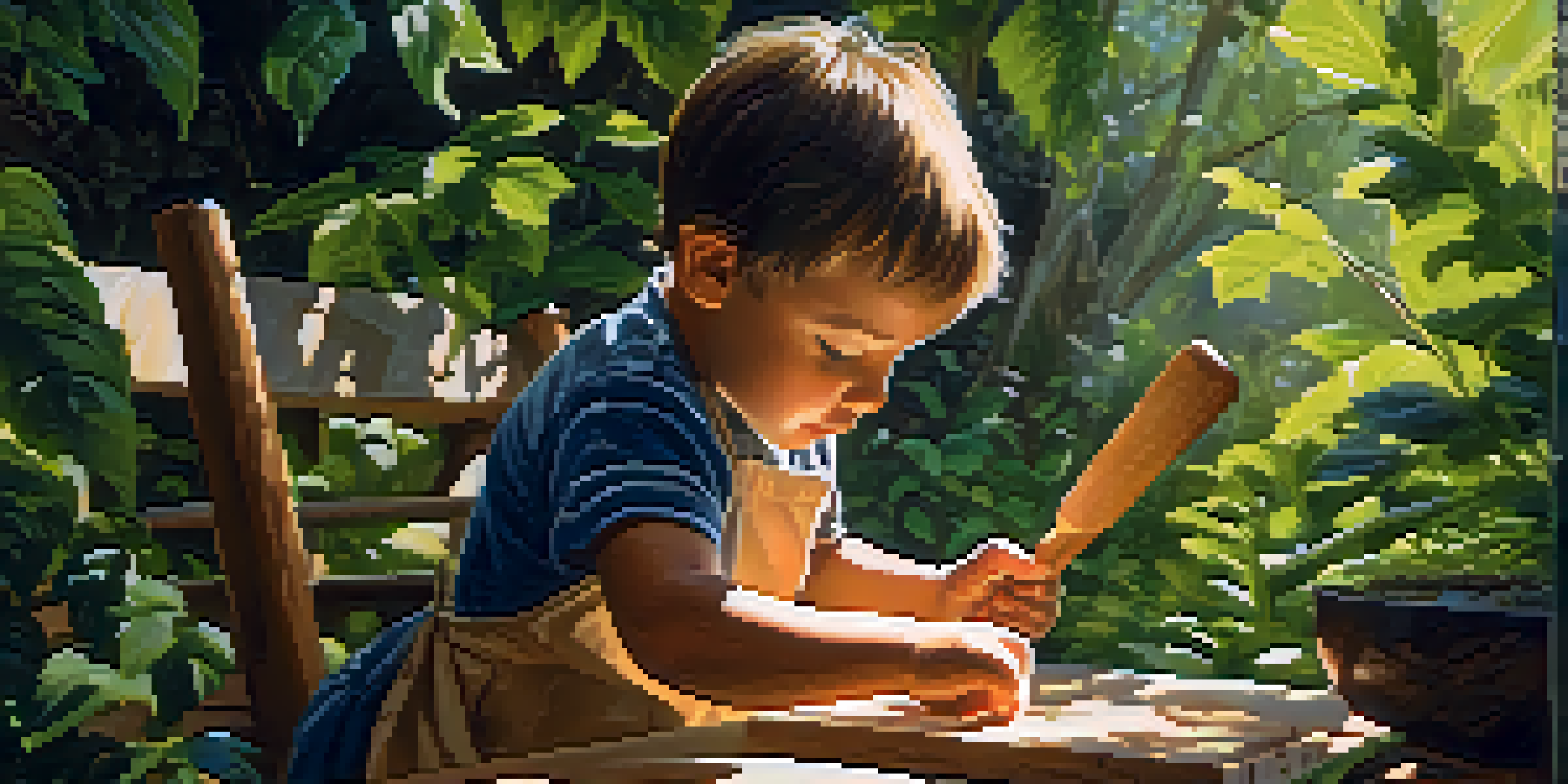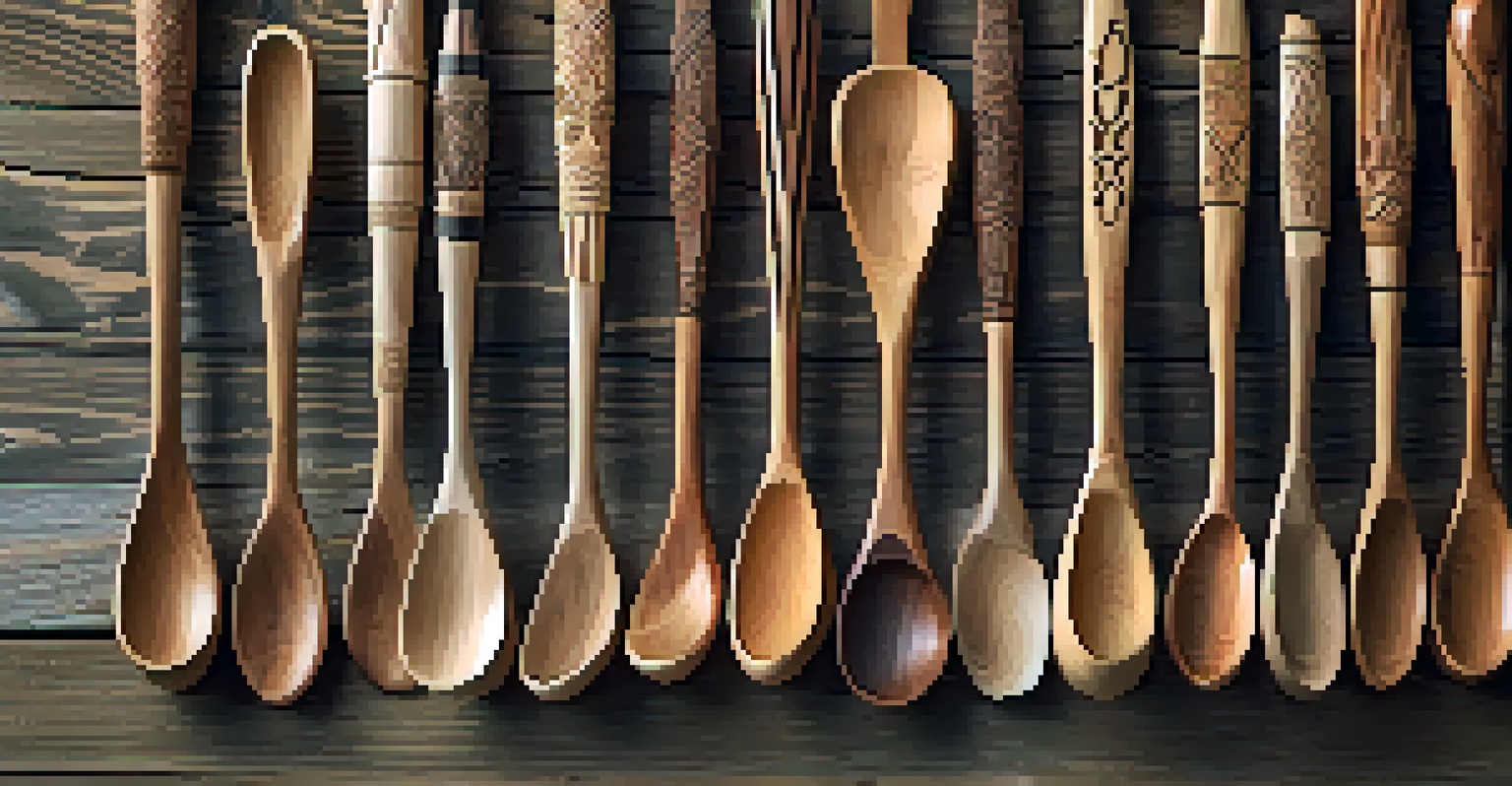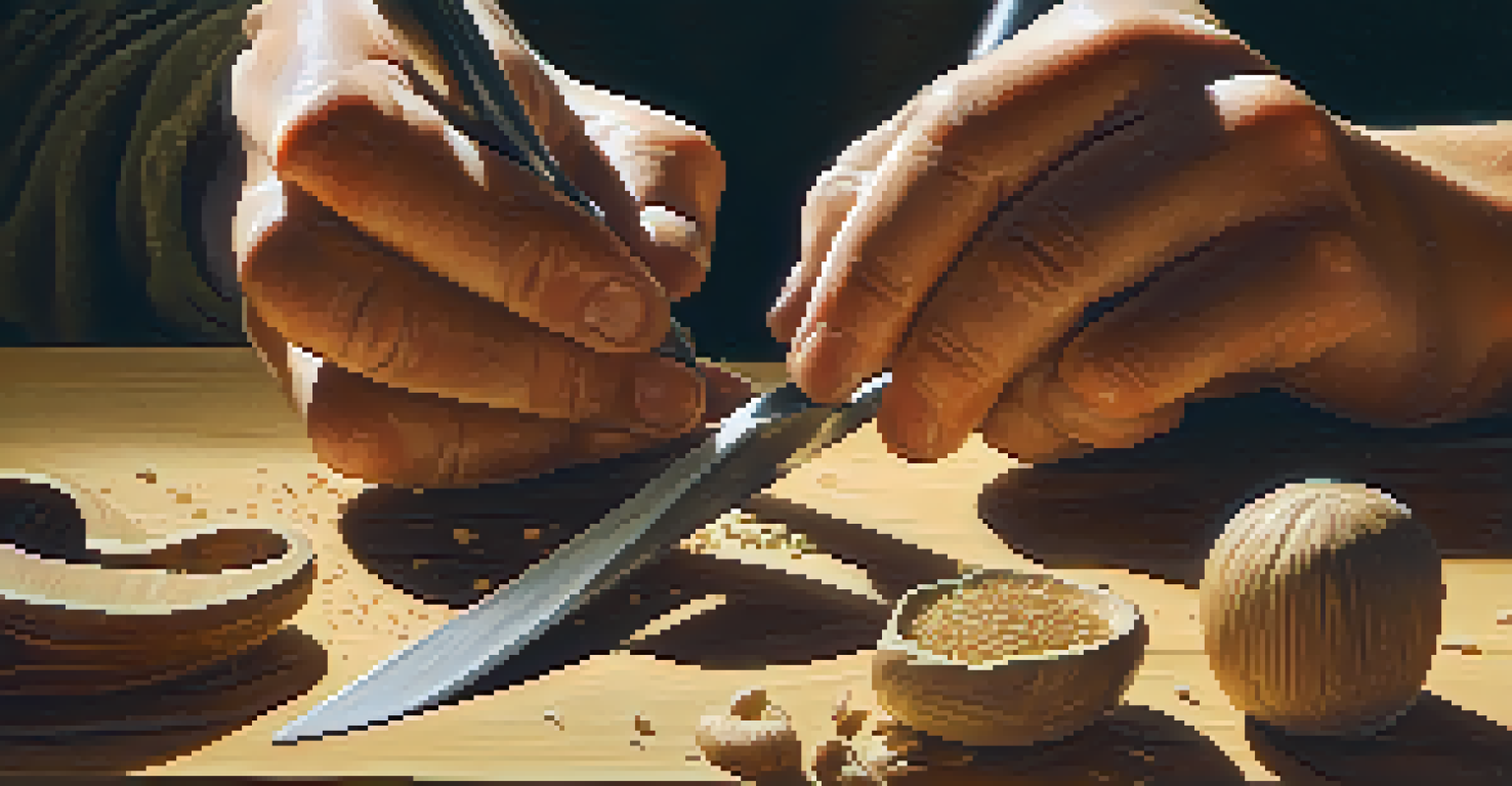Simple Spoon Carving: A Fun Project for Young Carvers

Why Spoon Carving is Perfect for Young Carvers
Spoon carving is a fantastic introduction to woodworking for kids. It allows young carvers to create something useful and beautiful while developing fine motor skills. Plus, it offers a sense of accomplishment that can boost confidence.
The best way to predict the future is to create it.
Working with wood can be incredibly rewarding, especially for young minds eager to create. Spoon carving is accessible; it doesn't require a workshop full of tools, making it manageable for beginners. The simplicity of the project means kids can focus on the process, not just the end result.
Moreover, it's a wonderful way to spend time outdoors or gather around a table with family. Sharing the experience of carving together can strengthen bonds while also instilling a love for craftsmanship in young hearts.
Gathering the Right Tools for Spoon Carving
Before diving into spoon carving, it's essential to gather the right tools. A few basic items are all you need: a carving knife, a small saw, and a hook knife for the bowl of the spoon. These tools are user-friendly and designed to fit comfortably in smaller hands.

Another important item is a piece of wood to carve. Basswood or birch are great choices for beginners, as they are soft and easy to work with. Plus, these woods have a lovely finish when carved, making the spoons visually appealing.
Spoon Carving Boosts Confidence
Spoon carving is an excellent way for kids to develop fine motor skills while creating something useful, which enhances their sense of accomplishment.
Don't forget about safety gear! A simple pair of cut-resistant gloves can protect little hands while they learn. Encouraging the use of safety gear from the start helps build good habits for any future woodworking project.
Choosing the Right Wood for Your Spoon
Choosing the right wood can make or break your spoon carving experience. Softwoods like basswood or poplar are excellent for beginners because they're easy to carve and won't wear out your tools too quickly. These woods are also readily available at most craft stores or lumber yards.
Every child is an artist. The problem is how to remain an artist once we grow up.
Hardwoods, on the other hand, might be more challenging for young carvers due to their density. However, if you're feeling adventurous, cherry or maple can yield beautiful results once your skills improve. Just remember, patience is key when working with tougher materials.
Ultimately, the wood you choose will affect not just the ease of carving but also the spoon's final appearance. Encourage young carvers to examine different types of wood and consider how the grain and color might enhance their spoon design.
Understanding Basic Spoon Carving Techniques
Spoon carving involves a few fundamental techniques that young carvers can quickly grasp. Start with the 'roughing out' stage, where you remove large chunks of wood to shape your spoon. This is where the excitement begins, as kids can visualize their creation taking form.
Next, there's the 'shaping' phase, where finer details come into play. Teach young carvers to use smooth, controlled strokes with their knives to create the spoon's bowl and handle. This step requires patience but can be incredibly satisfying as the design becomes clearer.
Safety is Key for Young Carvers
Ensuring proper supervision and teaching safety practices can help young carvers enjoy woodworking while minimizing risks.
Lastly, finishing touches like sanding and applying food-safe oil can bring the spoon to life. Encourage kids to admire their handiwork and consider personalizing it with carvings or designs to make it truly unique.
Safety Tips for Young Spoon Carvers
Safety should always come first when engaging in any woodworking project, especially with young carvers. Ensure that kids are supervised at all times and provide clear guidance on using tools properly. Setting ground rules can help prevent accidents and make the experience enjoyable.
Teach children about the importance of carving away from their bodies. This simple rule can significantly reduce the risk of injury. It may take some practice, but reinforcing this habit will help them carve safely as they gain confidence.
Lastly, remind young carvers to take breaks when they start to feel fatigued. Woodworking can be physically demanding, and it's essential to listen to their bodies. A well-timed break can lead to better concentration and enjoyment of the craft.
Creating Unique Spoon Designs
Encourage young carvers to unleash their creativity by designing unique spoons. From simple shapes to more intricate patterns, the possibilities are endless. Kids can draw their ideas on paper before they start carving, helping them visualize their final product.
Another fun idea is to incorporate personal touches, like carving initials or symbols that have special meaning. This not only makes the spoon more personal but also teaches kids about the joy of creating something meaningful.
Creativity in Spoon Design
Encouraging kids to design unique spoons fosters creativity and allows them to express themselves through their woodworking projects.
As they gain experience, they can experiment with different shapes and sizes. Why not try making a ladle or a decorative serving spoon? Each new design offers a chance to learn and grow their skills while having a blast.
The Joy of Sharing Your Spoon Creations
Once young carvers finish their spoons, encourage them to share their creations with family and friends. This can be a wonderful way to showcase their hard work and creativity. Kids often feel proud when they receive positive feedback about their projects.
Consider organizing a little 'spoon showcase' at home or a family gathering, where young carvers can present their work. They can explain the process they followed and what they enjoyed most about carving. This not only builds confidence but also inspires others to try their hand at spoon carving.

Lastly, remind them that every spoon tells a story. Whether it's a gift or a personal keepsake, these hand-carved treasures carry memories of the time spent creating them. Sharing those stories can spark interest in woodworking and creativity in those around them.